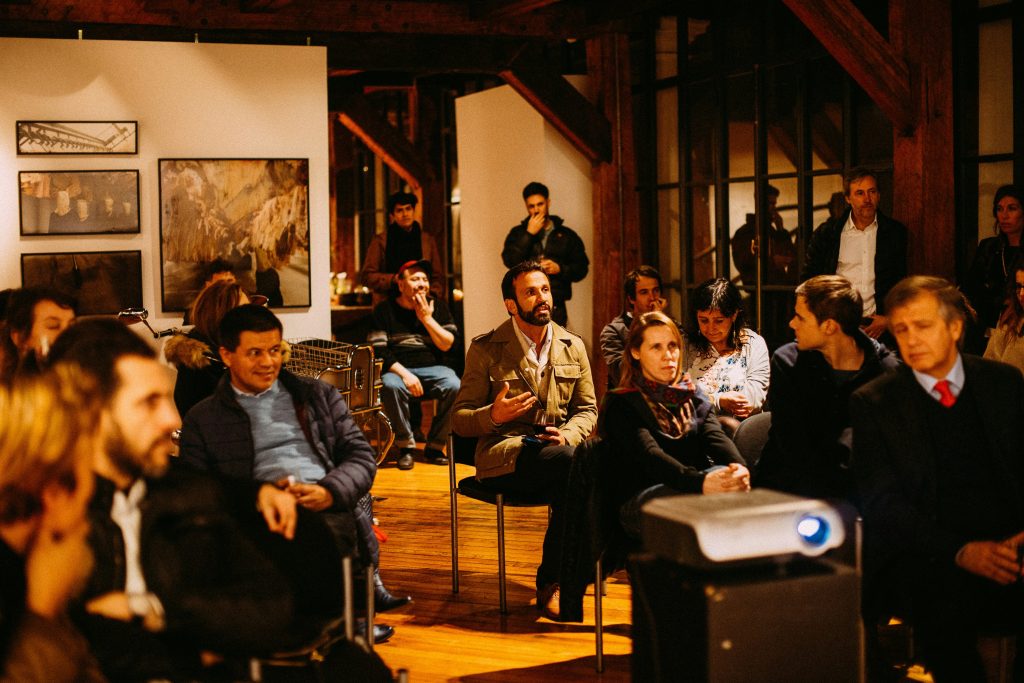Consumer experience
Are you maximising engagement opportunities at every consumer touchpoint?
We specialise in customer experience research that will help you unlock opportunities across all customer touchpoints:
- Communications
- Merchandising
- Category planning
- Shopper experience
- Visitor experience
- Event and exhibition space planning
- Sponsorship impact
- Customer satisfaction
- Product and range development
- Packaging development
Consider us an extension of your team.
we work with you and your partners, collaborating seamlessly to help you maximise your brand equity and get the desired results. Our consumer experience approach:
We start by understanding your priority aims and strategic objectives.
The research package we recommend is determined by your needs, what existing insights you have, your timings, and your budget.
What objectives have you set towards achieving your aims? What does success look like?
We help you set goals and KPI’s to measure success, month on month, year on year, in a continuous drive for improvement.
An initial review of your existing and secondary data on your audience, topic, and industry, helps us identify the gaps in our knowledge of your market and competitors.
Then we design the right research approach built around the principles of behavioural science. Our expertise in applied behavioural theory, including confirmation bias, heurists, and social incentivisation, enables us to ascertain peoples true actions, without relying on what they say they do.
We start by understanding your priority aims and strategic objectives.
The research package we recommend is determined by your needs, what existing insights you have, your timings, and your budget.
What objectives have you set towards achieving your aims? What does success look like?
We help you set goals and KPI’s to measure success, month on month, year on year, in a continuous drive for improvement.
An initial review of your existing and secondary data on your audience, topic, and industry, helps us identify the gaps in our knowledge of your market and competitors.
Then we design the right research approach built around the principles of behavioural science. Our expertise in applied behavioural theory, including conformation bias, heurists, and social incentivisation – enables us to ascertain peoples true actions, without relying on what they say they do.
Our bespoke research uses a mix of qualitative and quantitative methods, including:
- Community Panels
- Digital Immersions
- Depth Interviews
- Focus Groups
- Accompanied Shops
- Intercept Interviews
- Ethnography
- Usage and Attitude Surveys
- Brand and comms tracking surveys
- Observation
- Filmed Observation
- Customer Closeness
- Ideation and Co-Creation Workshops
- Creative optimisation and test surveys
- Segmentation and profiling surveys
- Kantar, Nielson and Mintel data analysis

Consumer, shopper and visitor usage and attitude research:
Crucial for developing a customer-centric approach, ensuring your marketing efforts align with consumer needs and expectations.
Shopper research studies consumer shopping behaviours, preferences, and decision-making processes, to understand how they interact with brands, products, and retail environments. This provides insights that help retailers and brands optimise their marketing strategies, store layouts, product offering, and customer experience.
Key components often used in shopper research include:
Shopping Behaviour:
Understanding how shoppers navigate stores, what influences their purchasing decisions, and how they evaluate products. This includes studying factors like foot traffic patterns, time spent in specific areas, and how shoppers use digital tools.
Purchase Drivers:
Identifying the key motivations behind purchases, such as price sensitivity, brand loyalty, product quality, convenience, or promotions.
Customer Segmentation:
Analysing different shopper segments based on demographics, psychographics, and shopping habits to tailor marketing and merchandising strategies effectively.
Path to Purchase:
Mapping out the journey consumers take from awareness to purchase, including touchpoints like advertisements, online research, and in-store interactions.
Role of Channels:
Examining the role of different shopping channels (e.g., online, brick-and-mortar, mobile apps), how shoppers switch between them along the purchase decision making process.
Brand Equity:
For your brand to be chosen over others, it needs to be physically and mentally available. Our research uncovers how consumers perceive and use different brands and what factors impact their choices among competing options.
Our comprehensive research in the consumer experience stage, delivers what you need for your upcoming strategies across:
By understanding shoppers more deeply, brands and retailers can create more compelling shopping experiences and drive sales effectively.
Store Design and Layout:
Optimising product placement and store layout to enhance shopper flow and increase sales.
Marketing Strategies:
Identifying the right way to plan your marketing and communication strategy with the right balance, content and activation for brand building and targeted sales. Tailoring marketing campaigns and promotions to align with shopper preferences and behaviours.
Product and Packaging Development:
Product and Packaging Development: Informing product and pack design based on how consumers shop and experience different brands.
Enhancing Customer Experience:
Creating more effective customer engagement strategies and improving overall satisfaction.

Events and sponsorship
We evaluate the effectiveness and impact of sponsorships on brands, organisations, and events.
Working with some of the UK’s biggest brands, our expertise has highlighted how sponsorships influence perceptions, consumer behaviour, and engagement, to offer a full analysis of overall return on investment (ROI).
Key components, methodologies, and applications of sponsorship research:
Impact:
Demonstrating impact against the goals of the sponsorship; increasing brand awareness, enhancing brand image, engaging target audiences, to drive sales.
Target Audience Analysis:
Identifying the demographics, attitudes, and behaviours of the audience associated with the sponsored event or property, to ensure alignment with the brand’s target market.
Brand Metrics:
Assessing changes in brand awareness, engagement, perception, loyalty, and advocacy that result from the sponsorship activity.
Event Evaluation:
Analysing the effectiveness of the sponsorship in achieving the brand’s objectives, including attendance, media exposure, and overall success.
Competitive Analysis:
Understanding how competitors utilise sponsorship, which can provide insights into market positioning and potential gaps.
Methodologies we regularly use in Sponsorship Research:
Surveys and Questionnaires:
Collecting quantitative data from the target audience to gauge awareness, perceptions, and reactions to the sponsorship and brand.
Observation and intercept vox pop interviews:
Conducting qualitative discussions with consumers to gain insights into their feelings about a brand’s sponsorship and how it influences their behaviour.
Social Media Analysis:
Monitoring social media conversations and engagement related to the sponsorship to assess public sentiment and brand association.
Sales Data Analysis:
Evaluating sales performance during and after the sponsorship period to determine if there are measurable impacts on revenue.
Our sponsorship research helps our clients with:
Strategy Development:
Helping brands and venues select sponsorship opportunities that align with their objectives and resonate with their target audiences.
Performance Measurement:
Developing metrics to evaluate the effectiveness of sponsorship initiatives and make informed decisions about future investments.
Negotiation and Activation:
Informing negotiations with potential sponsors by providing insights into the value of the sponsorship and how to activate it effectively.
Reporting and Presentation:
Developing comprehensive reports to communicate the value of sponsorship to stakeholders, including ROI and key performance indicators (KPIs).
Continuous Improvement:
Utilising research insights to refine sponsorship strategies, activation plans, and measurement approaches for future campaigns. Through effective sponsorship research, brands can maximise their investment in sponsorship opportunities and create meaningful connections with their target audiences.
Customer satisfaction:
Customer satisfaction research is essential for those looking to enhance customer loyalty, improve operational efficiencies, and drive long-term growth. By thoroughly understanding customer experiences, companies can stay aligned with their customers’ needs and preferences.
Customer satisfaction research is focused on assessing how products or services meet or exceed customer expectations. It helps organisations understand customer experiences, loyalty, and areas for improvement.
Key Components of Customer Satisfaction Research
Defining Objectives:
Clearly outlining what aspects of customer satisfaction you want to measure, such as overall satisfaction, promptness of service, product quality, or customer support.
Customer Segmentation:
Identifying different customer segments to tailor research to specific demographics or behavioural patterns. This helps in understanding diverse perspectives and experiences.
Measurement Metrics:
Utilising key performance indicators (KPIs) like Net Promoter Score (NPS), Customer Satisfaction Score (CSAT), or Customer Effort Score (CES) to quantify customer satisfaction levels.
Feedback Collection:
Gathering qualitative and quantitative feedback from customers regarding their experiences and expectations.
How clients use the insights from our customer satisfaction Research:
Improving Products and Services:
Gaining insights that directly inform product development and service enhancements, thereby aligning offerings with customer needs.
Enhancing Customer Experience:
Identifying pain points in the customer journey and opportunities for improving interactions and overall experience.
Increasing Customer Loyalty:
Understanding what drives customer loyalty to implement strategies that foster long-term relationships and reduce churn rates.
Benchmarking:
Comparing customer satisfaction levels against industry standards or competitors to assess performance and identify areas for competitive advantage.
Informing Marketing Strategies:
Using customer satisfaction insights to craft marketing messages that resonate with customers’ desires and expectations.
New product and packaging development
We have a tried and tested approach to NPD research to identify opportunities, design enhancements, and launch new products or improve existing ones. It involves a comprehensive understanding of market needs, consumer preferences, and competitive landscapes. We use a mix of consumer resonance, semiotics and heuristics to analyse potential success of new products and packaging.
Here’s a breakdown of the key components, methodologies, and applications of our NPD research:
Market Analysis:
Understanding market trends, size, growth potential, and potential challenges. This includes competitor analysis to identify gaps in the market.
Consumer Insights:
Gaining a deep understanding of consumer needs, preferences, and pain points. This often involves researching target demographics.
Idea Generation:
Collecting and analysing ideas for new products or improvements to existing products. This can come from consumer and stakeholder workshops, or trend analysis.
Concept Development:
Turning ideas into tangible product concepts and testing these concepts with consumers for their feasibility and appeal, resonance and impact.
Prototyping:
Creating prototypes or models to assess the product’s functionality, aesthetics, and user experience.
Testing and Validation:
Conducting user testing to gather feedback and validate the product concept before full-scale development.
Competitive Benchmarking:
Analysing competitors’ products to identify strengths, weaknesses, and market positioning, which can inform product development strategies.
How clients use the insight from our NPD Research:
Product Design and Features: Informing the design phase by identifying which features are most likely to achieve product purchase amongst potential customers.
Go-to-Market Strategies: Developing effective marketing and sales strategies based on insights about target customers and market dynamics.
Risk Mitigation: Reducing the risk of market failure by thoroughly understanding customer needs and validating product concepts before launch.
Product Portfolio Management: Assisting businesses in deciding which products to develop, enhance, or discontinue in response to market conditions.
Innovation Enhancement: Fostering a culture of innovation within the organisation by continuously seeking and evaluating new ideas.
Our brand research clients:
Recent consumer experience research:

Edinburgh Christmas markets and Hogmanay are enjoyed by thousand. What is the impact on Edinburgh’s visitor economy?
Christmas and new year are high energy events. We need to understand reflective and rationale thoughts to truly understand the longer-term impacts. For the past 2-years we have run a post-event attendee survey, using Assembly’s ticket purchasing database.
With around 1000 responses to each survey, we were able to provide some invaluable insight that demonstrates positive impact and enables Assembly to plan even better future events.
- Hogmanay is a driver to visiting Edinburgh. Entertainment needs to stay fresh to ensure current visitors return year-on-year
- Word of mouth and social media are the event’s strongest comms channels
- The events bring £xm into the city of Edinburgh; the opportunity to increase this in future years lies in more targeted events for families.

SSE, own The Hydro, with OVO Energy as the main sponsor. It’s essential that OVO see the impact of their sponsorship. SSE’s ability to demonstrate impact on the OVO brand strengthens the relationship and ensures continued ROI.
OVO need to understand the whole customer journey experience and how each touch point impacts brand health. We are in our 3rd year of impact evaluation with a package that includes in-venue surveys, observation, vox pops, digital report and film.
The experience attendee receives has a positive impact on brand health for OVO. 95% felt valued as a customer, 91% felt the rewards they received as a customer increased their loyalty to OVO and 82% stated that the rewards package is a key reason for using OVO for their energy.

What makes shoppers browse, pick up, consider and ultimately purchase a board game? And what can Big Potato Games do to ensure their games are chosen over competitors?
We are Big Potato’s research partner for the second year running to test their games and packaging to ensure they have the right appeal for consumers in the UK and USA. We test 5-8 games per year with their target audience using online focus groups.
The consumer insight developed from our research has informed:
- Whether the game goes to market or not
- Game amends to make it better to play or easier to understand
- Pack design and semiotics in terms of colour, design, logos, font
- Game names and straplines
- Player information and instructions
We have also identified a need to gain a better understanding of USA game purchasers, which has enabled Big Potato to develop a new brief to help them increase market share in the USA.

